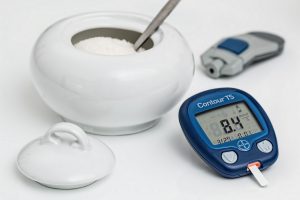Heart disease is the number one killer in America. It affects African Americans more than members of any other race or ethnic background. According to the CDC (Centers for Disease Control and Prevention), 44% of African American men and 48% of African American women have some form of cardiovascular disease, putting them at a far greater risk for heart disease and stroke than Caucasians. In fact, in African Americans under the age of 50, the heart failure rate is 20 times higher than that of any other race. There are multiple factors that contribute to heart disease, with

high blood pressure (also known as hypertension) being the largest factor. Weight, dietary practices and smoking can also contribute. However, there are ways to combat these factors, and lower your risk of developing heart disease, or beat it if you are already struggling with this silent killer.
High Blood Pressure
According to a 2009 study published in the New England Journal of Medicine, African Americans are more likely to have high blood pressure, also known as hypertension, than members of any other race. The risk is especially high in African American women. The American Heart Association theorizes that high blood pressure develops early in life for African Americans due to their genetic makeup, and salt sensitivity. This raises the chance of having a stroke. Because high blood pressure increases the risk of heart attack, stroke, and death, it is important to learn ways to lower your blood pressure and keep it under control. Whether high blood pressure runs in your family or not, find out what your numbers are and check them often. The more regularly you check your blood pressure, the greater your chance of learning how to control it. Report your numbers to your doctor so they can be aware of the changes as well.
Obesity & High Cholesterol
Another risk factor for developing heart disease is obesity, and African-American women are 80% more likely to be overweight or obese, than any other groups in the U.S. Being overweight increases your chances of high blood pressure, high cholesterol and heart disease; the more weight you carry, the more oxygen your body needs to move around the excess tissue, which means your heart needs to work harder and will be put under stress. Some strategies for controlling your weight include drinking plenty of water to feel more full, and opting for lean meats such as chicken instead of beef. Vegetables and fruits should be added to every meal as well. Exercise plays a key role in burning calories and strengthening your heart, so it is important to make moving your body a daily habit. Start slowly with gentle activities such as walking for half an hour everyday.
Diabetes
African Americans are also 77% more likely to be diagnosed with diabetes, a disease which can play a significant role in developing heart disease. High levels of glucose (or hyperglycemia, a defining characteristics of diabetes) narrow and harden the arteries, thus making it harder for blood to flow to and from your heart and, again, causing stress to your heart. Diabetes is, however, treatable and preventable as long as you are aware of the causes and work at managing it if you do develop it. Staying away from sugar and high-carb foods will help keep your insulin

levels down.
Smoking
The CDC has found that 1 in 5 African American adults smoke cigarettes, a practice which increases the chance of developing heart disease. It is no secret that smoking is not good for you, and it can be hard to quit once you begin, but it is never too late to stop smoking. Seek help from your doctor, as well as family or friends to help you quit. Quitting will significantly lower your risk of heart disease
While your racial or ethnic background may mean a greater chances of developing heart disease, lifestyle choices play a bigger role. In order to reduce your risk, it is important to take care of yourself and stay healthy. Stay on top of your blood pressure numbers, and take the necessary medications to keep it regulated. A healthy diet is key to keeping your heart healthy, so make sure you eat foods low in sodium, and limit sugary snacks or foods. Avoiding heart disease is possible as long as you take care of yourself, as healthier lifestyle changes can go a long way in reducing your risk.







